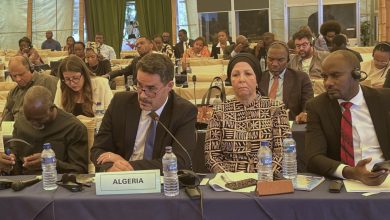Constantine – The week-long celebration of festive women’s attire from the Greater Eastern Algerian region commenced this Sunday afternoon at the National Public Museum of Arts and Traditional Cultural Expressions “Palace of Ahmed Bey” and the House of Creativity in Constantine.
This cultural event, running until January 12, celebrates the inclusion of the traditional festive women’s attire of Eastern Algeria in UNESCO’s List of Intangible Cultural Heritage. The program features various exhibitions, training workshops, lectures, panel discussions, musical performances, and fashion shows showcasing both traditional and modern designs.
The event highlights the participation of numerous local artisans who display Constantine’s intricate garments crafted by skilled hands. These artisans, dedicated to preserving the art of traditional embroidery, consider it an integral part of Algeria’s identity and cultural heritage.
Mr. Farid Zaïtari, the local director of culture and arts, emphasized that the event aims to spotlight the rich traditions of Eastern Algeria. “This celebration showcases traditional women’s attire representing the region’s provinces, such as Constantine, Annaba, Sétif, Souk Ahras, and Guelma,” he said.
He also mentioned that the program includes workshops on sewing and embroidering traditional garments, as well as seminars highlighting the cultural significance of these outfits. The goal is to preserve Algeria’s cultural heritage, educate younger generations about traditional attire, and encourage artisans to continue their craft.
Ms. Mariem Kebaïlia, director of the National Public Museum of Arts and Traditional Cultural Expressions and a member of the team that submitted the traditional attire file to UNESCO, noted that the celebration reflects efforts to protect Algeria’s intangible cultural heritage. She emphasized the cultural and historical significance of this attire, particularly in the face of external attempts to appropriate Algeria’s traditional garments.
She further explained that the Ministry of Culture and Arts initiated efforts to document and classify the traditional attire of Eastern Algeria for UNESCO’s Intangible Cultural Heritage List. This work began before the COVID-19 pandemic and involved a specialized committee of experts, researchers, artisans, and academics.
For additional coverage, visit DZWATCH.DZ.
Author: Nor-Eleslam




